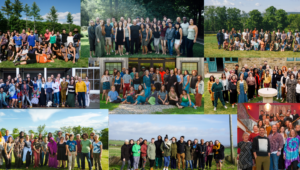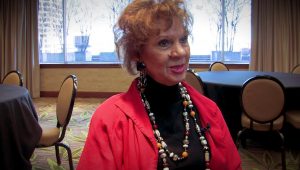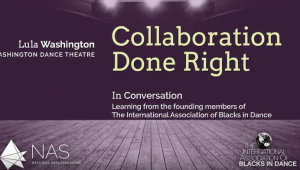Editor’s Note: This is one of a series of posts from guest bloggers discussing topics from this week’s Salzburg Global Forum for Young Cultural Leaders. Leaders from around the world are coming together to discuss issues that are critically important to the cultural sector − how do we create and articulate our value, what is global and what is local today and what is the role of arts organizations in society.
A multifunctional platform is a diesel or biofuel engine connected to various tools such as huskers, battery chargers or water pumps and it is a tool for empowerment of women and financial independence of deprived minorities. In 1994 the first of such multifunctional platforms were installed in Mali and Burkina Faso to combat poverty, especially amongst women who do most of the work in developing countries, yet are often financially dependent on their husbands. The project, simply known as the “Mali multifunctional platform,” is a time-weathered best practice for successful community work that frees rural women of two to six hours of work every day, gives them an income and thereby empowers them. When I studied international development this project was the example to follow.
Arts organizations around the world often struggle to build meaningful, sustainable relations with their community. Work with the community, rather than simply for them. Such organizations can learn a thing or two from the Mali multifunctional platform.
A significant part of community work, in development and the arts alike, is done for the wrong reasons. A politician wants nice pictures for the money he donates, a manager wants to spend some time in Africa “giving back” or a gallery needs to comply with a funderʼs checklist. Community projects that start that way are not about the community; they are about the institution.
Most of the earlier development work was initiated this way. NGOs and governments went into communities to do projects targeted at what they saw and believed was right. Women, invisible in their kitchen or walking miles to fetch water, often missed out when their more vocal husbands scored another improvement. The Mali multifunctional platform project managed to avoid this by specifically addressing a need of women in the communities, a need for less drudgery and financial independence.
Successful community work means to stop looking for what a community can do for you and to start discovering how you can help the community with something they really need. Only then can an arts organization work with a community, rather than work for them in the hopes of some return. This means a good community project is not drawn up behind a computer from the safety of your institution, but together with members of the community, in the scary world outside.
Museum Rotterdam, one of my all-time favorite museums, has an urban curator who – in her own words – spends her days cycling around town to find projects the museum can contribute to in a valuable way. For one of their signature projects they went so deep into a community that about the only thing they brought back to their venue was a pair of Uggs and a fake Blackberry. At the same time they changed the lives of many people with their work.
Of course, this is scary. And just to be clear: Iʼm not a saint. I also find it hard to step into a community center run by a local minority on a rainy Tuesday evening and I prefer to hang back when we hit the street to interview passers-by. Yet, this is where a successful participatory project starts. We didnʼt get the best contributions to the National Vending Machine from the people who came to visit the exhibition; some of the prime stories and ideas were collected at minus something degrees on a fair in a small, remote town.
The Internet has made meaningful community work much harder. Never before has it been easier never to leave your desk and still feel like youʼre connecting with people in a meaningful way. Hurray, another retweet! If you want to work with your community, unplug your computer and turn your smartphone off. Boredom will drive you to the people visiting your venue or – better still – the world outside where you will talk to real community members.
It took years before I saw my first multifunctional platform in the wild. It was a strikingly disappointing meeting with a unpretentious set of rusting tools. The thing Iʼd been hearing about for years proved to be nothing in comparison to its fame. I realized that is because the best community work in the world is focused on the community, the process and the added value, not on nice pictures, beautiful installations or a grand opening. Working with a community is not necessarily glamorous. It can be extremely fulfilling, though, which is hard to explain to funders but more than worth the effort.


